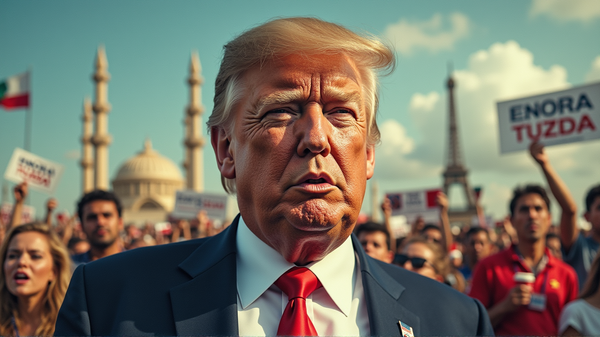New Sanctions Against Russia: The EU Targets Financial Institutions Supporting Military Supplies

The European Union (EU) is taking a stronger stance in its efforts to curb the supply of military goods to Russia by imposing new sanctions that focus on financial institutions. These institutions are seen as facilitators of the flow of military-related products into the country, especially those coming from Western subsidiaries in Southeast Asia. This move signals a significant shift in the EU’s strategy to cut off Russia’s access to military supplies amid the ongoing conflict with Ukraine.
The EU’s Expanding Sanctions Strategy
Since the onset of Russia’s full-scale invasion of Ukraine in 2022, the EU has implemented a series of sanctions aimed at weakening Russia’s war machine. While these sanctions have had an impact, EU officials acknowledge that they are not a “magic bullet.” Instead, the goal is to gradually slow down Russia’s military capabilities, make their operations more costly, and ultimately reduce their effectiveness. David O’Sullivan, the EU’s special envoy for sanctions, stated that the current focus is on targeting the financial institutions that play a crucial role in funding the transport and acquisition of military goods destined for Russia.
One of the biggest challenges the EU faces is the intricate web of supply chains that are used to bypass sanctions. Many companies have found ways to continue supplying Russia with dual-use goods—products that have both civilian and military applications—through complex routes and intermediaries.
Bypassing Sanctions: Southeast Asia as a New Frontier
While the EU has made significant progress in curbing the flow of goods through Central Asia, especially countries like Kazakhstan, Uzbekistan, and Armenia, the situation is more complex in Southeast Asia. In this region, countries are not just acting as transit hubs; many are home to manufacturing plants that produce goods used by Russia.
Much of the production in Southeast Asia, particularly in countries like China, involves subsidiaries of Western companies. These goods, once manufactured, are then shipped to Russia, often bypassing traditional trade routes and evading existing sanctions. O’Sullivan highlighted this as a critical area where further diplomatic and enforcement efforts are needed to prevent these supplies from reaching Russia.
Financial Institutions in the Crosshairs
In addition to targeting supply chains, the EU is also honing in on the financial institutions that are financing these operations. According to O’Sullivan, if these institutions are identified as supporting the flow of military goods to Russia, they will be given a choice: cease their activities or face sanctions themselves.
The United States has already seen some success in applying pressure on financial institutions involved in similar activities. The EU hopes to replicate this success by increasing cooperation with the U.S. and other allies to identify and sanction any banks or financial entities that are found to be complicit.
The Challenge of Harmonizing Sanctions Across the EU
One of the major hurdles the EU faces in its sanctions regime is ensuring consistent enforcement across all 27 member states. Each country has its own legal framework, and aligning these systems to effectively enforce sanctions requires significant coordination.
O’Sullivan pointed out that while the EU has made strides in this area, more work is needed to ensure that all member states are on the same page when it comes to implementing and enforcing sanctions. The ultimate goal is to create a unified front that can effectively cut off Russia’s access to military supplies and cripple its war efforts.
The Economic Impact on Russia
The sanctions are already starting to have a noticeable impact on Russia’s economy, pushing the country toward what O’Sullivan referred to as a “war economy.” As Russia devotes more resources to its military operations, other sectors of its economy are being starved of investment and growth opportunities. This shift toward a military-focused economy is expected to have serious long-term consequences for Russia’s economic future, with the effects becoming more pronounced over the next one to two years.
The sanctions are also forcing Russia to become increasingly isolated from the global financial system. With Western companies and financial institutions cutting ties, Russia is finding it more difficult to access the resources and technology it needs to sustain its military operations.
The Role of Central Asian Countries
While Southeast Asia is becoming a significant focus for sanctions enforcement, the EU has already made considerable progress in reducing the flow of goods through Central Asian countries. In particular, Kazakhstan, Uzbekistan, and Armenia have been identified as key transit points for goods destined for Russia.
Through diplomatic efforts, the EU has been able to significantly cut down on the amount of military-related products passing through these countries. However, the situation in Southeast Asia remains more challenging due to the region’s role as a manufacturing hub.
The Turkish Oil Connection
In addition to military supplies, the EU is also keeping a close eye on the flow of Russian oil and oil products. Since the beginning of 2024, Western countries have spent approximately $2 billion on Turkish oil products that were produced using Russian oil. This is another area where sanctions enforcement is becoming increasingly difficult, as countries and companies find ways to circumvent restrictions on Russian energy exports.
The EU is working closely with its allies to track and monitor the flow of oil and other commodities that are being used to fund Russia’s war efforts. As the sanctions regime continues to evolve, the EU is expected to introduce additional measures aimed at curbing these flows and further isolating Russia economically.
The Path Forward
As the war in Ukraine drags on, the EU remains committed to using sanctions as one of its primary tools for weakening Russia’s military capabilities. While the sanctions are not an immediate solution, they are part of a long-term strategy to gradually erode Russia’s ability to sustain its military operations.
The focus on financial institutions marks a new phase in the EU’s sanctions strategy, one that is likely to have significant implications for Russia’s access to military supplies. By cutting off the flow of funds that support these operations, the EU hopes to further cripple Russia’s war machine and bring an end to the conflict.
In the coming months, the EU is expected to introduce additional sanctions targeting other sectors of the Russian economy. These measures, combined with continued diplomatic efforts, aim to increase the pressure on Russia and force it to reconsider its military actions in Ukraine.
At the same time, the EU will need to address the challenges of enforcing sanctions across its member states and working with international partners to close any remaining loopholes in the sanctions regime. This will require ongoing coordination and cooperation, as well as a willingness to adapt and respond to new developments on the ground.
Conclusion
The EU’s decision to target financial institutions involved in supporting Russia’s military efforts represents a significant escalation in the sanctions regime. By focusing on the entities that finance the flow of military goods into Russia, the EU is aiming to cut off a critical lifeline for the country’s war machine.
While challenges remain, particularly in Southeast Asia and other regions where goods are being manufactured and shipped to Russia, the EU’s efforts are already starting to show results. With continued diplomatic pressure and coordinated enforcement, the EU hopes to further weaken Russia’s ability to sustain its military operations and bring an end to the conflict in Ukraine.
As the war continues, the EU’s sanctions strategy will evolve, with new measures likely to be introduced in response to Russia’s actions. The ultimate goal is to create a situation where Russia can no longer afford to continue its military aggression, forcing it to seek a peaceful resolution to the conflict.




